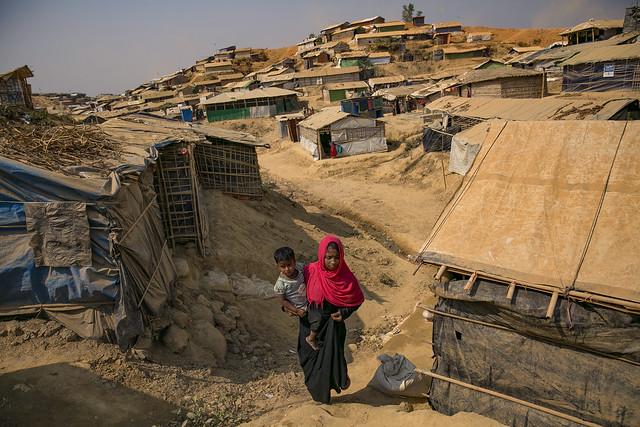
Gender inequality persists in international relations and national security
The Lowy Institute has released a comprehensive study of women in Australia’s international relations sector, revealing ‘severe gender imbalances … despite some prominent trailblazers’. The study found that Australia is behind its international peers, in both the private sector and the broader public sector, hindering workforce effectiveness and innovation. The paper includes some powerful interactive graphics and makes a number of useful recommendations.
ASPI’s Danielle Cave, who was a co-author of the Lowy report, wrote an insightful piece on it for The Strategist, highlighting the importance of diversity in decisionmaking. Susan Harris Rimmer and Elise Stephenson also wrote about the report and suggest that future research include analysis of cultural, socioeconomic and linguistic backgrounds.
A new piece on NPR gives an insight into the gender challenges in the US national security sector. It also discusses the call from the Leadership Council for Women in National Security for the major 2020 presidential candidates to pledge to seek gender parity in national security posts.
Incorporating LGBTQ into WPS
Writing for the Global Observatory, Jamie Hagen has considered the future of LGBTQ human rights in the context of the WPS agenda. Hagen says there are a number of ways these perspectives could be better integrated into the agenda, including through peace deals (as was seen during the Colombian peace talks), national action plans, and efforts to strengthen alliances for and resistance to anti-gender politics.
Examining sexual violence in conflict
Dawn Stevenson has investigated why sexual violence remains a weapon of choice during conflict. Looking at case studies in Rwanda and the Democratic Republic of the Congo, she unpacks this question as well as external factors such as pre-existing normalised sexual and gender-based violence, and socioeconomic situations that create the conditions for widespread use of sexual violence in conflict.
Also this month, UNAMID—the United Nations–African Union peacekeeping mission in Sudan’s Darfur region—launched a public awareness campaign on the ‘elimination of sexual violence in conflict’. The campaign will be based in central Darfur, where ongoing fighting has meant a continuation of sexual and gender-based violence.
Women and children targeted in Papua New Guinea
Reflecting on recent violence in Papua New Guinea’s Hela province, Nicole George sheds light on why women and children may have been targeted. She argues that gendered socioeconomic and political structures—such as a sense of familial responsibility and disproportionate material insecurity for women—make women particularly vulnerable during outbreaks of violence.
Women in mediation and advocacy
A July meeting between US President Donald Trump and Pakistani leaders appears to have included no women, despite Trump’s signing of the US Women, Peace and Security Act of 2017. However, women are working to make inroads as mediators in a number of conflicts elsewhere. In an interview with the European Peacebuilding Liaison Office, Ghalia Sassi discusses her experience as a mediator in Libya and suggests ways in which women mediators can be better supported.
A new report from Interpeace offers some insights into strengthening the role of Palestinian women in peace and security discussions using creative methods. The Mustakbalna program worked with the Freedom Theatre to engage women in capacity-building workshops and in theatre, photography and videography sessions to build confidence and advocacy and technical skills.
Incorporating gendered perspectives
An article published by the Council on Foreign Relations looks at the importance of incorporating a gender-sensitive approach in humanitarian efforts. The piece emphasises the need to understand the structural inequalities in a society in order to better and more appropriately respond to humanitarian issues.
Displacement and the WPS agenda
The London School of Economics’ Middle East Centre has released a short video on the nexus between displacement and the WPS agenda. Displacement causes disruption to women’s education and their ability to participate in civil affairs. The video explores ways in which women can better mobilise and be better supported when affected by displacement.
New literature, new narratives
A number of publications were released in July that seek to document the experiences and narratives of women often sidelined in the discussion of international politics.
Routledge published Women, peace and security in Myanmar: between feminism and ethnopolitics. The book brings together the work of multiple researchers to examine the contribution of women to the peace process in Myanmar and considers the potential for that process to increase women’s empowerment.
A book edited by Zahra Hankir, Our women on the ground, delves into the stories of 19 Arab and Middle Eastern female journalists. The New York Times reviewed the book, noting how the narratives go beyond the ‘foreign correspondent playbook’ to uncover different perspectives.
Many articles have been written in recent months on the role of women in Islamic State and understanding their actions and agency within the terrorist organisation. Azadeh Moaveni’s Guest house for young widows: among the women of ISIS will be published in September and documents the stories of 13 women who joined IS, revealing their motivations and the politics surrounding their decisions.
Editors’ note: An earlier version of this post misattributed the authorship of the book Our women on the ground. We are grateful to the book’s editor, Zahra Hankir, for drawing the error to our attention.